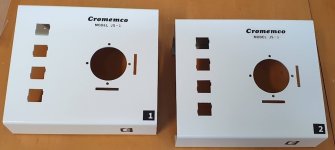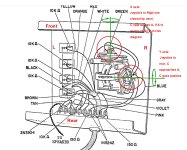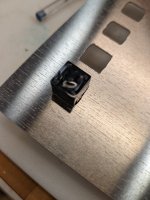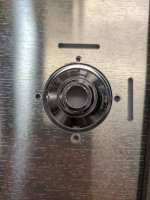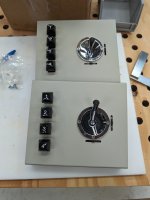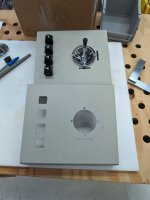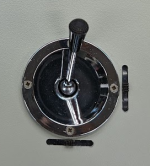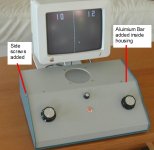I've created a Mouser project for all the components needed for the PCB here:
https://www.mouser.com/ProjectManager/ProjectDetail.aspx?AccessID=e130c7c33d - the quantities are for a single PCB
@Hugo Holden Would you mind taking a look at the chosen transistors in particular to make sure they match the specs we want? Thanks!
Mostly very inexpensive parts except for those tantalum caps.. Do you think an axial electrolytic could be substituted?
All the parts look ok, none are particularly critical.
On the topic of those 10uF axial Tant caps. Cromemco used them on the D+7A board. They have suitable electrical properties to act as the input and output filter caps on LM7xxx voltage regulator IC's. If using just electrolytics, it would pay to put 0.1uF ceramic capacitors in parallel with those so that the high frequency performance prevents the regulators from oscillating. In general for most of these regulators a 0.33uF capacitor is recommended on the input and output at least, many a case most manufacturers to keep it simple used 4.7 to 10uF Tants. In many a case they are bead types.
I'm not much of a fan of bead Tant caps, as they age they have a penchant for shorting out. The new ones are not as bad as the old blue and green and orange ones from the 70's and 80's, but with more time, who knows. I use the bead ones too, because I'm not a fan of electrolytic caps in general. If many cases now, with vintage restorations, where possible, the uF values and voltage value and physical size permitting, I replace electrolytics with film types. This eliminates the need for future replacements.
On the other hand, the mil spec axial Tants are super reliable and I have replaced many more electrolytics. I have not seen these types fail, even in a single case, in any of my vintage gear so I have more confidence in them. They were used a lot in Tek scopes and military VDU's. They have very good electrical properties, low ESR and very low leakage compared to an electrolytic. They never dry out or lose capacity. The have a sealed body with a glass seal at one end, unlike the electrolytic cap with a rubber bung that ultimately perishes. So with these axial Tants, I'm very fond of them, but, compared to an electrolytic cap, they are very expensive little devils.
Electrolytics are fine everywhere for this projects though, the Tants are not absolutely required. But if electrolytics are used on the regulator inputs and outputs, it might pay to parallel a 0.1uF monolithic ceramic capacitor with each one.

